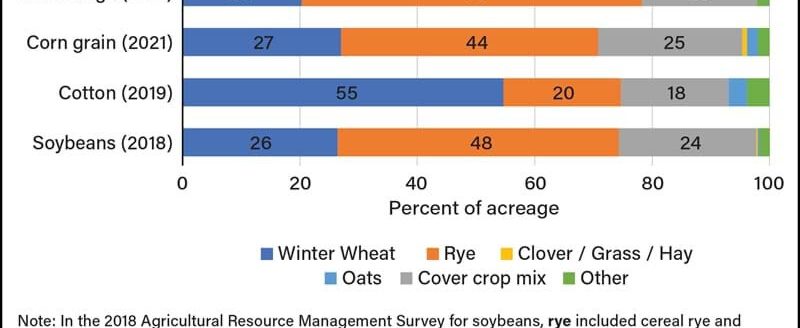Secretary Naig shares cover crop management tips for spring
These 6 tips can help ensure cover crop success on farms across Iowa
Iowa Secretary of Agriculture Mike Naig shares spring management tips for farmers who planted fall cover crops. Successfully managing cover crops will differ based on the fall planting date, spring growth conditions and the goals established by the farmer. By considering these steps, farmers can maximize cover crop benefits while protecting cash crop yields.
“Cover crop acres in the state of Iowa have seen a 256% growth from 2012 to 2017, according to the U.S. Census of Agriculture,” said Naig. “In addition to enhancing soil health and improving water quality, cover crops have benefits for weed control and forage for livestock. It is important to follow best practices in order to maximize the return on investment.”
6 tips for cover crop success:
1. Evaluate for winter kill
Scout the cover crop fields and check the crown of the plant for green plant tissue. If the leaves are brown and there is no visible green material near the soil surface, the plant may have winter-killed. Oilseed radish and oats typically winter kill and do not need to be terminated. Winter cereal rye, winter wheat and winter triticale often need to be terminated in the spring.
2. Consider termination options
The Conservation Systems Best Management Practices Manual provides termination guidelines with the intent of minimal impact to cash crops that follow cover crops. Herbicides or roll killing can be an option for termination. Tillage can also be used but is not recommended because planter challenges may occur. Tillage also disrupts the cover crop residue and makes it less effective in preventing soil erosion and suppressing weeds. If tillage termination is required, more than one pass may be needed to effectively terminate the cover crops. If herbicides are used to terminate the crop, it is best to spray when the crop is actively growing, during the middle of the day and when overnight temperatures are above 40 degrees Fahrenheit.
3. Allow for growth
To see maximum benefits in the field, allow cover crops to grow as long as possible. Plan to terminate cover crops near soybean planting dates. If planting corn for the first time after an over-wintering cover crop, terminate 10 to 14 days before the estimated corn planting date.
4. Adjust planter setups
A field planted after a winter cereal cover crop will be in a different condition than a tilled or no-till field with no cover crop. Evaluate the planter setup and make sure that the seed slot/trench is properly closed at planting and seeds are at the proper depth. An open seed slot can be especially damaging to corn seed.
5. Understand crop insurance requirements
Crop insurance plans will mandate when cover crops must be terminated. Some policies require that cover crops are terminated five days before planting your cash crops. These timelines will vary based on insurance policies, planting zone and whether tillage is used. Contact an insurance agent to discuss the details of a policy.
6. Plan ahead for future planting
Cover crop management plans may need to be adjusted based on the type of cover crop planted and how it was terminated. For example, some residual herbicides have carryover restrictions for certain species of cover crops. Talk to an agronomist or cover crop seed representative about specific management systems and how to integrate cover crops.
The Iowa Department of Agriculture and Land Stewardship offers annual funding to assist farmers with implementing cover crops into their operation. To learn more or participate in the cost-share opportunities, visit your local Soil and Water Conservation District Office.
This information was put together with help from the Iowa cover crop working group, which includes representatives from the Iowa Department of Agriculture and Land Stewardship, Practical Farmers of Iowa, Iowa State University, Iowa Learning Farms, and USDA Agricultural Research Service. More information about incorporating cover crops into your farming operation can be found on CleanWaterIowa.org, IowaLearningFarms.org or PracticalFarmers.org.


